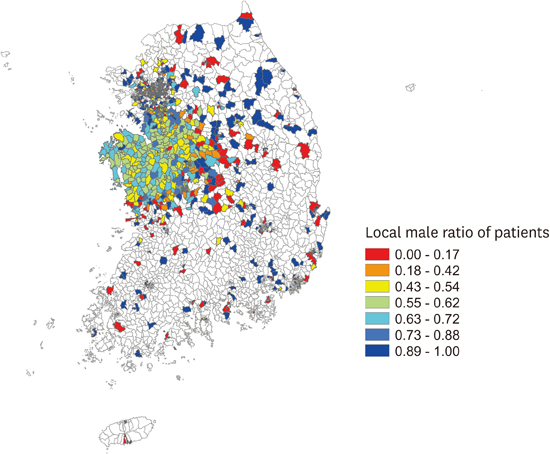1. Horner MW, Mascarenhas AK. Analyzing location-based accessibility to dental services: an Ohio case study. J Public Health Dent. 2007; 67:113–118.

2. Caprarelli G, Fletcher S. A brief review of spatial analysis concepts and tools used for mapping, containment and risk modelling of infectious diseases and other illnesses. Parasitology. 2014; 141:581–601.

3. Naves LA, Porto LB, Rosa JW, Casulari LA, Rosa JW. Geographical information system (GIS) as a new tool to evaluate epidemiology based on spatial analysis and clinical outcomes in acromegaly. Pituitary. 2015; 18:8–15.

4. Sun W, Gong J, Zhou J, Zhao Y, Tan J, Ibrahim AN, et al. A spatial, social and environmental study of tuberculosis in China using statistical and GIS technology. Int J Environ Res Public Health. 2015; 12:1425–1448.

5. McGuire S, Kruger E, Tennant M. Travel patterns for government emergency dental care in Australia: a new approach using GIS tools. Aust Dent J. 2011; 56:389–393.

6. Goli A, Oroei M, Jalalpour M, Faramarzi H, Askarian M. The spatial distribution of cancer incidence in fars province: a GIS-based analysis of cancer registry data. Int J Prev Med. 2013; 4:1122–1130.
7. Genco RJ, Borgnakke WS. Risk factors for periodontal disease. Periodontol 2000. 2013; 62:59–94.

8. Kim DW, Park JC, Rim TT, Jung UW, Kim CS, Donos N, et al. Socioeconomic disparities of periodontitis in Koreans based on the KNHANES IV. Oral Dis. 2014; 20:551–559.

9. Genco RJ. Current view of risk factors for periodontal diseases. J Periodontol. 1996; 67:Suppl. 1041–1049.

10. Pereira SM, Ambrosano GM, Cortellazzi KL, Tagliaferro EP, Vettorazzi CA, Ferraz SF, et al. Geographic information systems (GIS) in assessing dental health. Int J Environ Res Public Health. 2010; 7:2423–2436.

11. Kruger E, Whyman R, Tennant M. High-acuity GIS mapping of private practice dental services in New Zealand: does service match need? Int Dent J. 2012; 62:95–99.

12. Kurcz R, Kruger E, Tennant M. Using GIS to analyse dental practice distribution in Indiana, USA. Community Dent Health. 2013; 30:155–160.
13. Tennant M, Kruger E, Shiyha J. Dentist-to-population and practice-to-population ratios: in a shortage environment with gross mal-distribution what should rural and remote communities focus their attention on? Rural Remote Health. 2013; 13:2518.

14. Derbi HA, Kruger E, Tennant M. Incidence of oral cancer in Western Australia (1982-2009): Trends and regional variations. Asia Pac J Clin Oncol. 2016; 12:e305–10.

15. Joo HT, Jeong BJ, Cho IW, Shin HS, Lim MH, Park JC. Geographic information system (GIS) analysis on the distribution of patients visiting at a dental college hospital: a pilot study. J Dent Rehabil Appl Sci. 2015; 31:283–293.

16. Park IS. An analysis on metropolitan concentration factors of health care utilization in local cancer patients using GWR. J Community Welf. 2016; 56:29–56.

17. Jo DG. GIS and geographically weighted regression in the survey research of small areas. Surv Res. 2009; 10:1–19.
18. Eke PI, Dye BA, Wei L, Slade GD, Thornton-Evans GO, Borgnakke WS, et al. Update on prevalence of periodontitis in adults in the United States: NHANES 2009 to 2012. J Periodontol. 2015; 86:611–622.

19. Krishnatreya M, Saikia A, Kataki A, Sharma J, Baruah M. Variations in the spatial distribution of gall bladder cancer: a call for collaborative action. Ann Med Health Sci Res. 2014; 4:Suppl 3. S329–31.

20. Walker BB, Schuurman N, Hameed SM. A GIS-based spatiotemporal analysis of violent trauma hotspots in Vancouver, Canada: identification, contextualisation and intervention. BMJ Open. 2014; 4:e003642.

21. Tennant M, Kruger E. Turning Australia into a ‘flat-land’: what are the implications for workforce supply of addressing the disparity in rural-city dentist distribution? Int Dent J. 2014; 64:29–33.

22. Han DH, Lee HJ, Lim S. Smoking induced heavy metals and periodontitis: findings from the Korea National Health and Nutrition Examination Surveys 2008-2010. J Clin Periodontol. 2013; 40:850–858.

23. Labriola A, Needleman I, Moles DR. Systematic review of the effect of smoking on nonsurgical periodontal therapy. Periodontol 2000. 2005; 37:124–137.

24. Wan CP, Leung WK, Wong MC, Wong RM, Wan P, Lo EC, et al. Effects of smoking on healing response to non-surgical periodontal therapy: a multilevel modelling analysis. J Clin Periodontol. 2009; 36:229–239.











 PDF
PDF ePub
ePub Citation
Citation Print
Print










 XML Download
XML Download